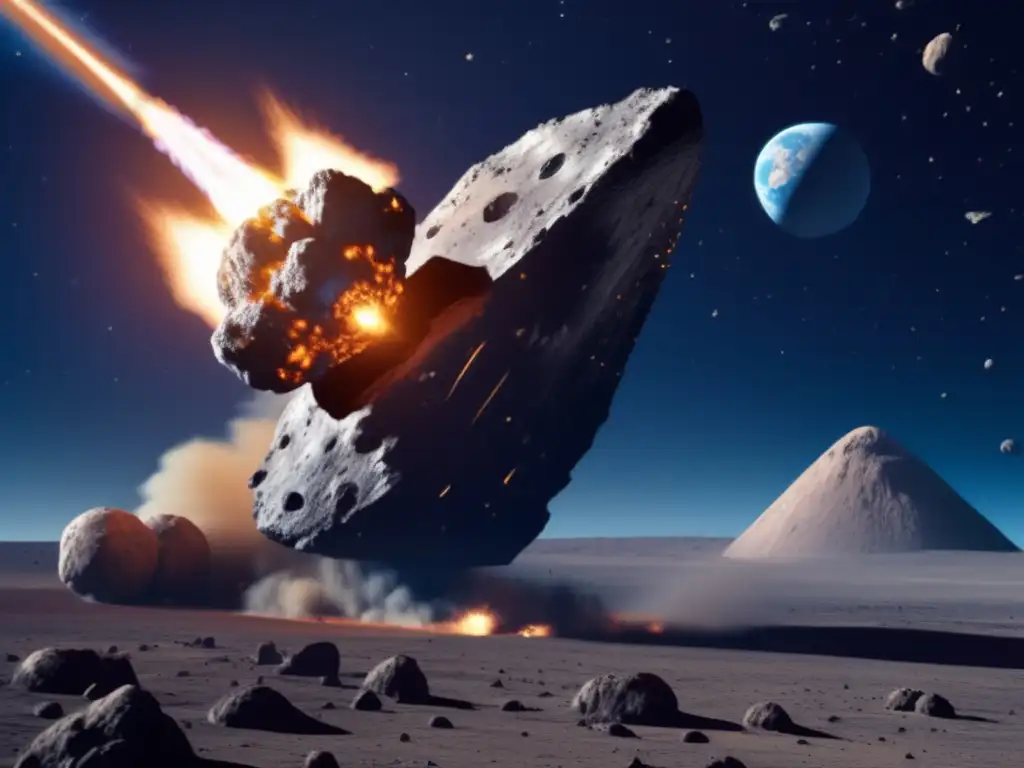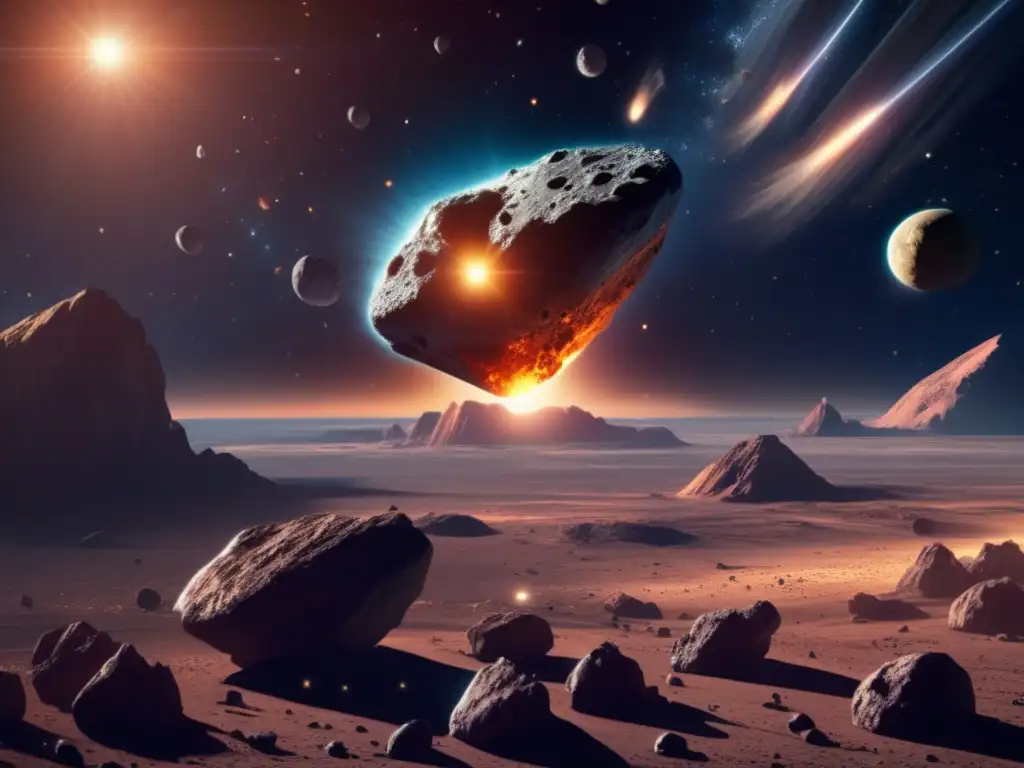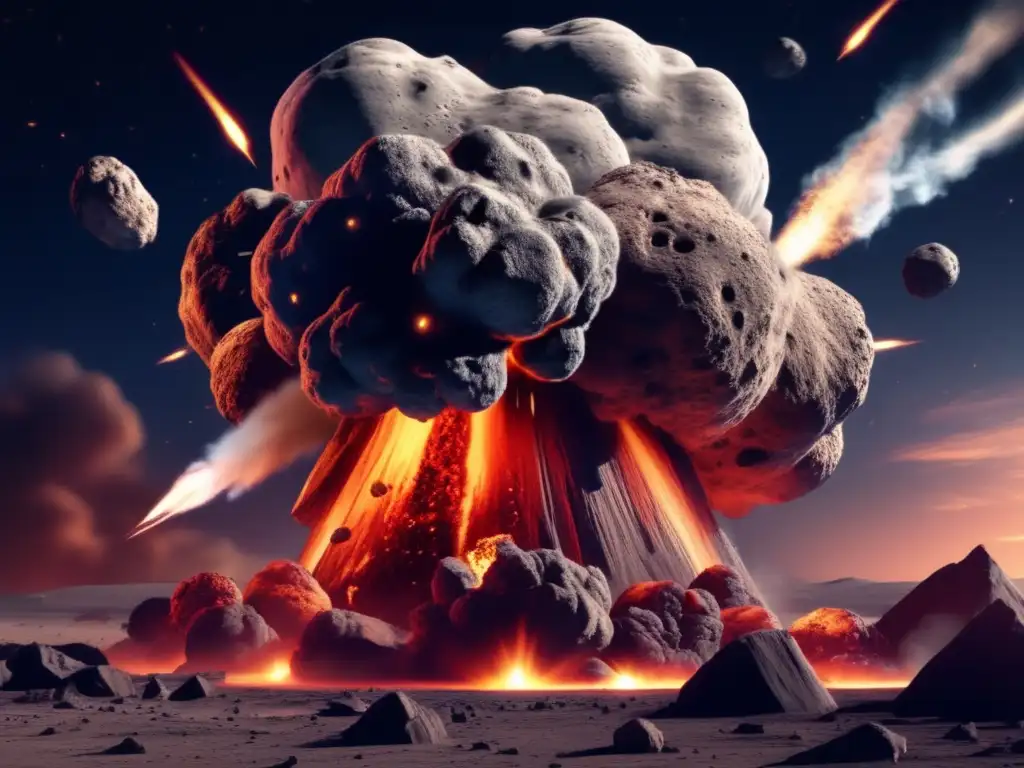Space Rock Showdown: Tools For Asteroid Defense

Introduction
Asteroids, also known as "space rocks", are celestial objects that orbit the sun. These rocky or metallic bodies vary in size, shape, and composition, and some of them can pose a threat to Earth if they come too close or collide with our planet. In recent years, there has been a growing interest in planetary defense, which refers to the study and development of methods to prevent or mitigate the effects of asteroid impacts. This article will explore some of the tools and techniques that scientists and engineers are using to defend Earth against potential cosmic collisions.
Laser Beams: A Promising Planetary Defense Tool

Laser Deflection
One of the proposed methods for deflecting an asteroid from its trajectory is to use a powerful laser beam to vaporize or ablate part of its surface. By doing so, the asteroid would experience a small but constant force, which could change its course over time. NASA's Double Asteroid Redirection Test (DART) mission, which is set to launch in 2021, will test this concept by crashing a spacecraft into the moonlet of the asteroid Didymos and observing the resulting deflection.
Laser Fragmentation
Another approach that has been suggested is to use lasers to fragment an asteroid into smaller pieces that would be less dangerous if they hit Earth. This method could be particularly useful for asteroids that are too large or too fast-moving to be deflected by other means. However, it would require a lot of energy and precise targeting, as well as careful consideration of the potential risks of creating additional debris in space.
Laser Drilling
In addition to defense, lasers could also be used for scientific purposes, such as drilling or sampling an asteroid's surface. The Japanese Hayabusa2 mission, for example, used a small projectile fired from a spacecraft to create a crater on the asteroid Ryugu and collect subsurface material for analysis. Such missions could provide valuable insights into the composition and origin of asteroids, as well as help prepare for future human exploration and resource utilization.
Rocket Science: Pushing Asteroids Off Course

Kinetic Impactors
Another commonly proposed method for asteroid deflection is to use a spacecraft to ram into the asteroid at high speed, imparting a large momentum transfer that would change its velocity and trajectory. This technique, known as a kinetic impactor, could be used for relatively small or medium-sized asteroids that are several years away from possible impact. One possible candidate for a kinetic impact mission is the asteroid Apophis, which is expected to make a close approach to Earth in 2029 and 2036.
Gravity Tractors
For larger asteroids or those that are closer to Earth, a more gentle approach may be necessary. This is where the concept of a gravity tractor comes into play. A gravity tractor is a spacecraft designed to hover near an asteroid and use its own gravitational attraction to slowly pull the asteroid off course. This method requires patience and precision, as well as a good understanding of the asteroid's shape and mass distribution.
Nuclear Explosions
While not a favored option, nuclear explosions have been proposed as a last-resort solution for deflecting asteroids that cannot be safely diverted by other means. The idea is to detonate a nuclear device near the asteroid's surface, creating a shock wave that would push it away from Earth. However, this approach carries significant risks and uncertainties, as well as ethical and political concerns regarding the use of nuclear weapons in space.
Monitoring Asteroids: Early Detection and Tracking

Asteroid Surveys
One of the most important aspects of planetary defense is early detection and tracking of potentially hazardous asteroids. To this end, many organizations around the world are conducting asteroid surveys using ground-based telescopes and spacecraft. These surveys aim to identify as many near-Earth objects (NEOs) as possible and determine their orbits and physical properties. Some of the prominent asteroid detection programs include NASA's Sentry, Catalina Sky Survey, and Pan-STARRS.
Asteroid Characterization
Once an asteroid has been identified as potentially hazardous, it is important to gather more information about its size, composition, spin rate, and other characteristics. This can be done using a variety of remote sensing techniques, such as radar imaging, infrared spectroscopy, and visible-light observations. The more we know about an asteroid, the better prepared we can be to devise effective defense strategies.
Planetary Defense Exercises
To test and improve our ability to respond to potential asteroid impacts, various organizations regularly conduct tabletop exercises and simulations that simulate different scenarios and emergency response procedures. For example, the International Asteroid Warning Network (IAWN) and the Planetary Defense Coordination Office (PDCO) recently organized a fictional exercise called "2021 PDC", which simulated the discovery of a hypothetical asteroid on a collision course with Earth and the subsequent efforts to mitigate the impact risk.
Frequently Asked Questions

-
Can we predict with certainty if an asteroid will hit Earth?
No, asteroid trajectories are subject to many uncertainties and a single measurement may not provide enough information to accurately predict their future paths. However, with continued monitoring and refinement of our predictive models, we can reduce the risk of potential impacts and take appropriate defensive actions.
-
What are the chances of a catastrophic asteroid impact in the near future?
The probability of a large asteroid striking Earth in the next few decades is relatively low, but it is still a non-zero risk that must be taken seriously. The key is to remain vigilant and proactive in our efforts to detect, track, and deflect potentially hazardous asteroids before they become a threat.
-
Can we destroy an asteroid using nuclear weapons?
While theoretically possible, using nuclear weapons to destroy an asteroid should only be considered as a last-resort option in extreme cases, where other methods have failed or are not feasible. Nuclear explosions could create more debris and potentially worsen the impact risk, as well as raise ethical and political concerns.
-
What can individuals do to support planetary defense efforts?
Individuals can help by spreading awareness about the importance of planetary defense, supporting scientific research and education, and advocating for government funding and international cooperation on this issue. Small actions can make a big difference in ensuring the safety and security of our planet.
-
How can I learn more about asteroids and planetary defense?
There are many excellent resources available online and offline for those interested in delving deeper into the fascinating world of asteroids and planetary defense. Some useful websites include NASA's Near-Earth Object Program, the Minor Planet Center, and of course, Asteroid Realm.
Conclusion
Planetary defense is a complex and ongoing challenge that requires cooperation, innovation, and investment from all sectors of society. By leveraging the latest tools and techniques in laser technology, rocket science, and asteroid monitoring, we can improve our ability to protect our planet from the threat of space rocks and achieve a safer and more resilient future for all.
We hope this article has provided you with insightful information and inspired you to learn more about the fascinating world of asteroids. If you have any questions or comments, please feel free to share them with us in the comments section below. Thank you for reading and stay curious!
Additional Resources

Here are some additional resources for further reading on the topic:
- NASA Center for Near-Earth Object Studies
- Minor Planet Center
- B612 Foundation
- Space.com's Asteroid News and Information
 Shielding The Blue Planet: The Future Of Asteroid Defense
Shielding The Blue Planet: The Future Of Asteroid Defense Ready For Impact: The Latest In Planetary Defense Strategies
Ready For Impact: The Latest In Planetary Defense Strategies The Battle Against Asteroids: Techniques For Planetary Defense
The Battle Against Asteroids: Techniques For Planetary DefenseIf you want to discover more articles similar to Space Rock Showdown: Tools For Asteroid Defense, you can visit the Planetary Defense category.
Leave a Reply

Articulos relacionados: